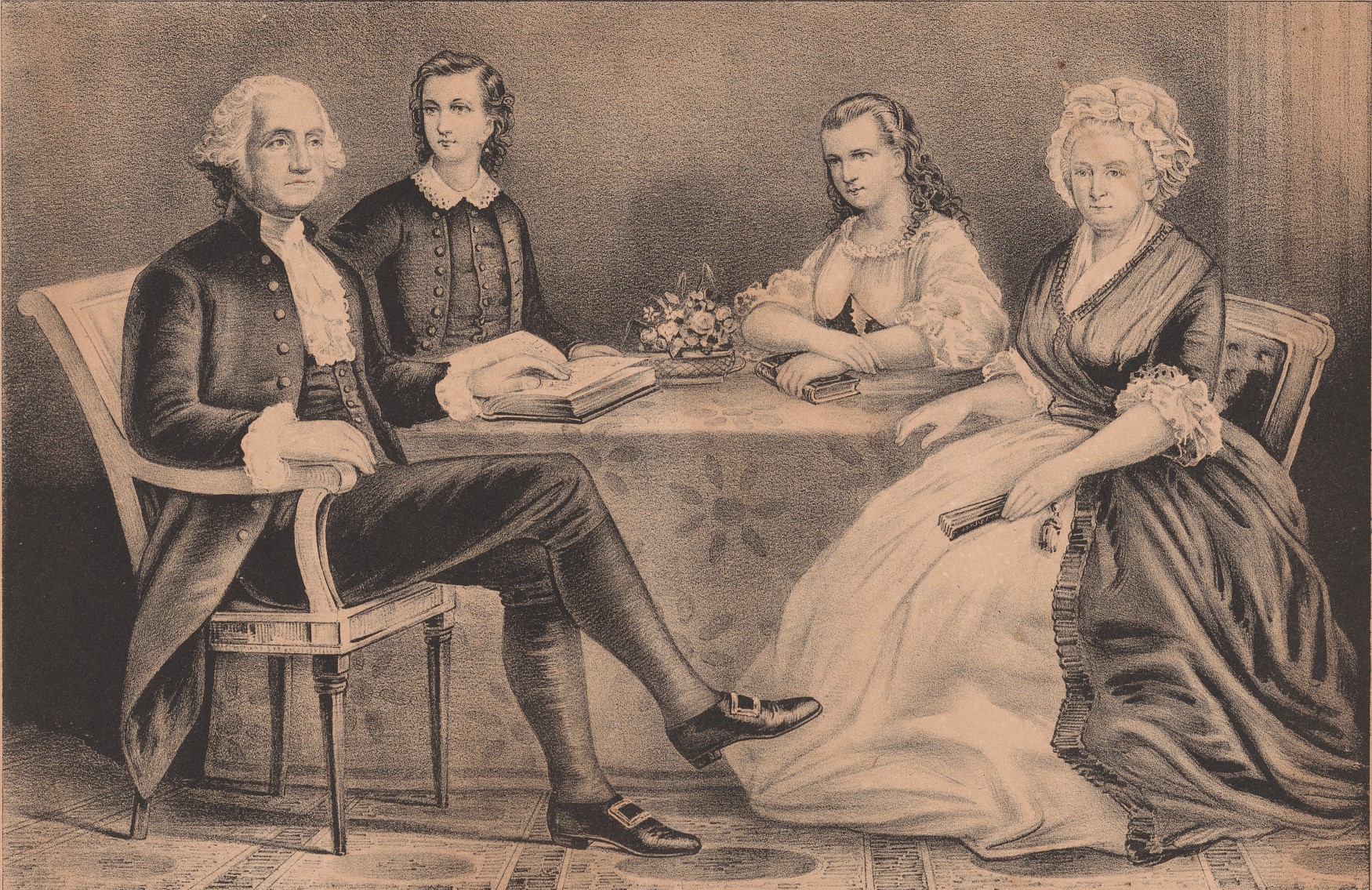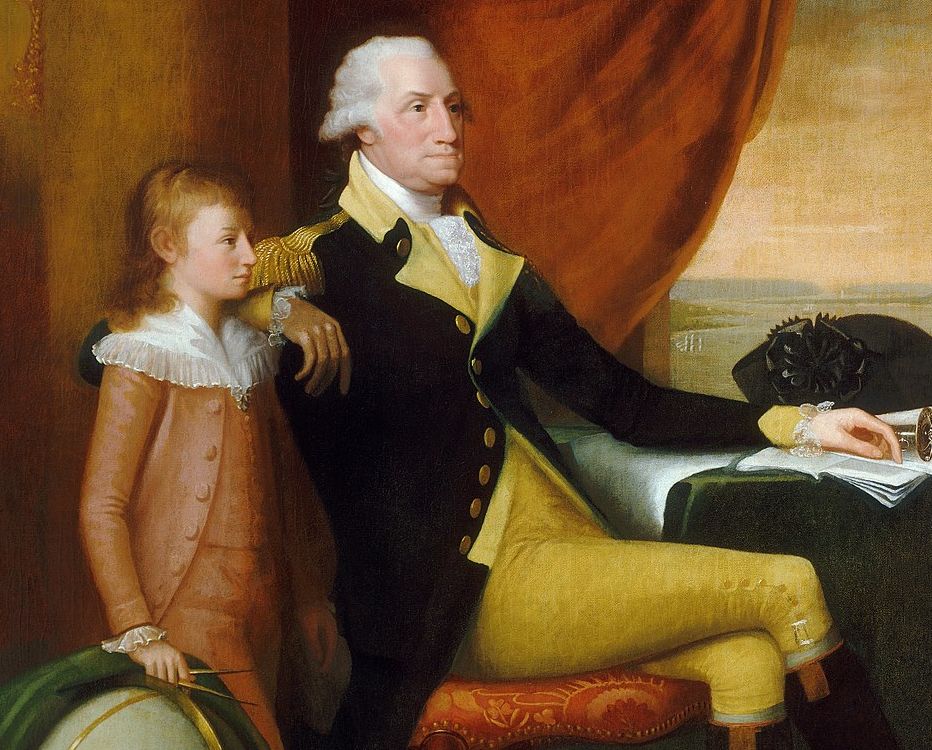Authors:
Historic Era: Era 3: Revolution and the New Nation (1754-1820s)
Historic Theme:
Subject:
September 2023 | Volume 68, Issue 6


Authors:
Historic Era: Era 3: Revolution and the New Nation (1754-1820s)
Historic Theme:
Subject:
September 2023 | Volume 68, Issue 6

Editor's Note: Charles S. Clark is the author of George Washington Parke Custis: A Rarefied Life in America’s First Family, which was published in 2021 by McFarland Books. A retired D.C. journalist, he writes frequently about his hometown of Arlington, Virginia.
Although George Washington didn’t father any children of his own, he devoted years to caring for two privileged step-children and two step-grandchildren. Most accomplished of those elite offspring was George Washington Parke Custis (1781-1857), whom Washington, with his wife Martha, adopted as an infant and raised in the rarefied atmosphere at Mount Vernon.
The young Custis would become known for building, with enslaved labor, Arlington House on the Potomac River, his life-long commemorations of Washington’s memory, his patriotic oratory, and marrying his daughter Mary to a promising Virginia soldier named Robert E. Lee.
But those adult accomplishments were hardly preordained. “Washy” or “Wash,” as intimates called him when he was a youngster, enjoyed being served by an enslaved work force, sitting for portraits by prestigious painters, and chatting up the nation’s most notable personalities.
Yet, to be well-born back when the United States was young cut two ways. For the aristocratic Custis, it meant flung-open doors and a lifetime of answering to a world-famous name. And lofty expectations. Custis could have used his special privileges to scale new heights of accomplishment, in the manner of, say, John Quincy Adams, the sixth president who “descended from glory” from another president. Or he could have squandered his life in the manner of, say, John Payne Todd, the adopted son of President James and Dolley Madison, who traumatized his family with dissipated years of drinking and gambling.
Like many upper-crust peers, Custis struggled to find focus when he was sent away to not one, but three of the nation’s elite colleges. His failures nearly broke the heart of George Washington, whose own self-administered education left him brimming with a desire to raise a young classics scholar.
But Custis, whose father’s untimely death after the 1781 battle of Yorktown left him in need of infant care (his mother was preoccupied with other children), displayed a knack for driving the nation’s first president to distraction.
A remarkable series of letters between George Washington and Custis at his quarters at what became Princeton University, as well as St. John’s College in Annapolis, survives. Replies from the callow Washy, along with Washington’s anguish-filled missives to the youth’s stepfather David Stuart, are in the archives, as are the tactful exchanges between the tuition-paying Washington and the presidents of those colleges. These dialogues reveal the great man at his most vulnerable.
at 4" data-entity-type="file" data-entity-uuid="fb060e6e-a9a4-4e0a-b395-5284703067b4" height="538" src="https://www.americanheritage.com/sites/default/files/inline-images/ezgif.com-webp-to-jpg_4.jpg" width="436" loading="lazy">
Early Disquietude
As a boy, Custis was assigned a succession of tutors - among them, Washington’s personal secretary Tobias Lear, at Mount Vernon and during the First Family’s time living in New York City and Philadelphia. But his chief influence was Washington himself, who gave him advice on everything from mealtime punctuality to farming techniques to the treatment of slaves, as Custis would detail in his posthumously published memoir.
Ironically, Washington’s struggles to mentor the errant Custis echoed the nearly identical behavior of the boy’s father, John Parke Custis, whom Washington also step-parented after marrying Martha. In the 1760s, the young veteran of the French and Indian War expressed his wishes that his stepson (nicknamed Jacky) could enjoy the formal classical education that he himself lacked (though the diligent Washington could recite Shakespeare).
At Mount Vernon, Washington prepped Jacky by buying him expensive books and hiring a Scottish tutor named Walter Magowan. When Jacky turned 14, Magowan recommended a boarding school run by the influential educator Jonathan Boucher, outside Fredericksburg. But Jacky failed to impress, embracing horsemanship more than scholarship and frequently forgetting his grammar. His attendance record was dismal. So, Boucher eased the pressure on Jacky to master the works in Latin and Greek, recommending instead that Jacky take the gentleman’s Grand Tour of Europe. At this, Washington balked, exclaiming, “He knows nothing of French.”
It then was arranged for Jacky to begin studies at King’s College in New York City (now Columbia University). But soon, he got grew distracted by visits to Prince George’s County, Maryland, where he courted the rich Eleanor Calvert. Rather than pursue a degree, Jacky at 20 married 16-year-old Calvert in 1774, and settled along the Potomac for a life of luxury. He continued as a source of worry to Washington in the run-up to the American Revolution.
Jacky’s son Washy would cause those same worries after our first president retired to his much-longed-for Virginia home. Under Washington’s wing, the boy grew up on conversational terms with early America’s luminaries, from Lafayette to “Light Horse Harry” Lee. There were high hopes. In Edward Savage’s famous painting of the nation’s first presidential family, the long-haired boy at age eight is standing next to a seated George Washington, and Washy’s hand rests imperiously on a globe. Custis’ elders might have wondered if that gesture foretold far-reaching vision.
“You are now extending into that stage of life when good or bad habits are formed,” President Washington wrote Wash on November 28, 1796, the eve of the youth’s first journey to a distant college, “when the mind will be turned to things useful and praiseworthy, or to dissipation and vice.”
Washy’s schooling in Philadelphia — Tobias Lear had arranged for him to commute